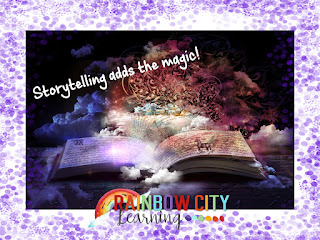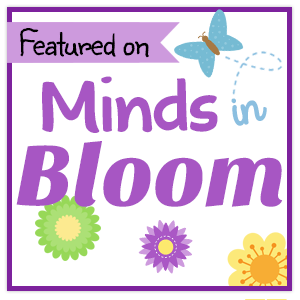As a young teacher, immersed in a culture unlike the one I grew up in, I learned to dance like the Jackson Five (or at least like Michael and Janet), I learned to jump rope double dutch and recite all the rhymes that usually were a part of that, I knocked on doors of my students' homes and invited myself in to chat and have a cup of tea or whatever that family enjoyed having a conversation over. I had never heard of culturally responsive teaching, and yet my teaching spirit guides were whispering in my ear 24/7 about the need to make that class a community and to build relationships before the teaching and learning could begin.
As my career path led me to a situation where the dominant culture of the school was in theory more like my own, I still had to struggle to learn the traditions and practices of that group. In this school which I had assumed was of my own religion, the boys and girls did not sit together during prayers. As the girls disappeared behind a curtain during morning prayers, and as I tried to get my new charges to return to sit "with their class" (my cultural understanding as a trained teacher), I soon heard the voices of my teaching spirit guides once again, "Not how we do things here."
As the third season of my teaching career got underway, happily immersed in a neighborhood school right where I was raising my own children, I still listened to those teaching spirit guides telling me that there were many surprises on the horizon, and that community building and relationships should take first place way ahead of the curriculum. Rainbow City as a learning community was born in that school. Planned, named, and put into practice by my students. It became our shared culture.
I was sometimes accused by colleagues of being all fluff and glitter, but every "fluffy" activity that I planned, every long and personal story that I shared, every time I stopped everything so that a student could share a similarly long and highly personal story contributed to my success as an educator and my students' successes as learners and citizens. Our learning experiences made a light sent out to shine into the future. Say it loud. I'm fluffy and proud! This "fluff and glitter" approach gave my students and me a chance to tailor the learning to our prior knowledge and experiences and to build from there. I currently have many very successful adults out there in the world who give at least a portion of the credit to "What I learned in Rainbow City." Some give probably much more credit than I alone deserve, but we sure built some beautiful learning and beautiful memories together. And to any Rainbow City citizens reading this post, mwah! Kisses and hugs to each of you. My heart has followed you and celebrates your wonderful life, the choices you have made, and the lessons that you are still learning!
The spirit guides are whispering that this post is becoming just a tad fluffy and a touch too glittery, so we will move along. Culturally Responsive Teaching. Another buzzphrase. To me, culturally responsive teaching is literally just plain old Responsive Teaching. Teaching that respects and responds to the learner and gives the learner options in how to process and respond to that learning. It is and can be as simple as that, in my humble opinion. Take time to get to know your students, build relationships first, and draw on the knowledge that you have gained in this process to tailor the learning to the learner.
A wise and wonderful principal once told me that, "I like for people to do things WITH me, not TO me." as she encouraged my serving on so many district committees. The same life lesson should apply to the atmosphere in our classroom learning communities. Of course we should cover the curriculum standards. But we will do so much more than cover if we involve the students in how the lesson will be presented and how responses and assessments will happen. Teaching and learning shouldn't happen to them, rather it should happen with them.
Some easy ways to get started on creating a more responsive classroom:
Game-playing
All kids love games. Most families play games, and every culture has certain games that are unique to its members. It's so easy to incorporate game playing into your teaching practices. I developed a review game with my students when the game show "Are You Smarter than a Fifth Grader" was on TV. Everyone watched it. It was part of the culture of our community. What fun to see fifth graders triumph over grownups! It showed that kids are smart, they pay attention, and have a lot of knowledge to share. I made a fairly simple power point with a slide for each subject and then inserted a question from a lesson we had learned that week. The question slide was linked to an answer slide. Three of my class jobs involved being the "Game Show Host", "Technician", and "Awards Committee". The whole class played every Friday in the time slot before lunch. Because what are you going to then anyway, right? The host read the question as it appeared on the screen. The technician played a song loop on on our boom box. (Subliminal messaging works great here. The song we used for our peppy thinking music was "It Takes All Kinds of People" from Thanks and Giving by Marlo Thomas and friends. It took me forever to find this now long hidden gem on the internet, so I am linking it here for you. You're welcome! Make it your favorite ear worm. I can still hear it right now!) While the music played, kids wrote their answers on individual white boards (or laminated white card stock) with a wipe off crayon or marker. Each student kept an old sock in their desk to erase with. When the music stopped and the host said, "Show me!", each student held up his/her answer. Everyone with the correct answer received five rainbow city dollars. (Class Economy secrets here.) This simple review game became part of our class culture for years after the TV show failed. It was simply "what we do here" to remember and celebrate what we've learned and to get ready for tests.
SCOOT games are another way to introduce or reinforce learning in a responsive way. Kids need to move! This game approach gets them up and moving. An important piece of SCOOT gaming, though, is the followup. It's important to give students time for debriefing and a little conversation with their peers. As they present their responses, watch their learning success soar! Look here for a little SCOOT inspiration!
Improv
Improv (improvisation) is an effective way to get students to try on character traits from fiction or history or current events, filtered with their own cultural background. Work in small groups (I like to start with a "fishbowl" approach - everyone gathered around one small group who will demonstrate first) and give the participants each a character, a general situation from your lesson focus, a mood, and a time/place to discuss their reactions. Sit back and watch. You will learn so much about the culture of your students. The teaching elves at Rainbow City Learning are working on an improv approach to the way kids deal with natural disasters. Be sure to sign up for our mailing list when the box pops up on this blog post for a free sample when it's ready, and follow Rainbow City Learning on TpT to see when it's posted. Yeah, the teaching elves are related to the teaching spirit guides. They have some pretty good ideas. Even when they suggest the use of glitter. I listen.
Social interaction
Humans are interactive creatures. Kids need to talk. When you encourage them to share information and responses, and to plan and execute PBL projects together, learning magic happens. Give them what my students and I called "Conversational Opportunities" as often as your own culture and sanity will allow. Let go of the reins whenever the coast is clear ahead and let the students take over. You are always there to walk around, bringing the focus back to the "I Can" statement or a piece of the lesson that you want to reinforce. Drop it casually into the conversation and let your students run with it!
Storytelling
I'm a raving fan of the storytelling approach. To me, it's like adding honey to your tea or a sprinkle of sugar to your coffee or cocoa. Well, you get it. Is it necessary to teaching a good lesson and getting a high rating on your eval? Probably not. Your evaluator may even need a bit of coaching on how the storytelling has made you a more culturally responsive teacher. To me, good storytelling leads you into some of the best lessons you'll ever teach. Telling a little known story that you know about an historical figure, a friend who was just like that fictional character, or especially you yourself when you were their age will hook your audience , hold them in the palm of your hand as their brains open up to receive new knowledge and will (bonus!) encourage them to share some of their own stories. All storytelling does not have to be oral. You can tell your own story, finish the lesson, and send your students back to their places with a burning desire to write their own story that applies in their journal or Interactive Notebook.
Learning that motivates students and sets their souls on fire with a passion to know more and to show what they know is culturally responsive learning. You don't have to rap the times tables or work on a secret handshake or dance on the desks to bring this to your class. You simply have to care about each student, build a relationship of respect and trust, and then take off the training wheels! The lessons will culturally tailor themselves as your students feel more a part of it all.
The more I read about culturally responsive teaching, the more I see these common threads: kids feel safe and respected in class, kids are finding motivation in learning (something in the ideas or process is holding a mirror up to each kid receiving it), attitudes begin to change around school and learning (both are seen as fun and stress free), and kids have choice in the way they respond.
A resource that brought me success in bringing this type of learning to my students is an Interactive Notebook model that we used for every subject. This is a basic tool and template that can increase the cultural responsiveness of your classroom. We built each notebook together as we responded to the specific lessons that we were required to learn. Each student's notebook was unique to that student, and it became the ultimate test study guide. No textbook or tedious study guide needed to accompany it. Fluff and glitter? Try it out and you tell me!
For more January ideas, please visit the amazing blogs of Teacher Talk. If you'd like to join us as a blogger, contact me before linking up!

























